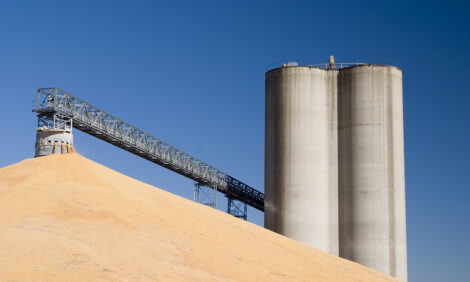



New Report on Farming's Impact on Antibiotic Resistance
UK - Although resistance in human infections is mainly caused by human antibiotic use, for a range of bacteria, farm animal use contributes significantly and for some infections is the main source of resistance, according to a new report from the Alliance to Save our Antibiotics.Scientists and leading figures are increasingly warning of a serious health crisis in future, where some infectious diseases will no longer be treatable, if we do not urgently start using antibiotics more sparingly and intelligently, according to the report from the Alliance to Save our Antibiotics. Antibiotic resistance is developing faster than new antibiotics are being developed, as finding new antibiotics is becoming increasingly difficult and expensive.
The Alliance is an umbrella group of Compassion in World Farming, the Soil Association and Sustain and its 19-page report is entitled 'Antibiotic Resistance: The Impact of Livestock Farming on Human Health'.
Despite previous attempts to reduce use, surveys have shown that many doctors still prescribe antibiotics far more often than necessary, a high proportion of patients still believe that antibiotics are effective against viruses, and a significant number of patients do not even complete a full course of antibiotics, sometimes saving tablets for later self-medication.
On farms, many antibiotics are used routinely for disease prevention or for the treatment of avoidable outbreaks of disease. Increasing use of antibiotics that are critically important in human medicine is also a serious concern. Some government officials and the intensive livestock industries are reluctant to reduce antibiotic use significantly , because this might increase production costs. As a result, those representing the interests of intensive livestock farmers and drug companies generally argue that the use of antibiotics does not contribute to the problem of antibiotic resistance in humans to any appreciable extent. Some governments, including the British government, accept industry arguments and claim there is no conclusive evidence that farm antibiotic use contributes to the human resistance problem.
In reality, increasing resistance levels are driven by antibiotic use in all sectors: in humans in the community and in hospitals, on farms and in companion animals. Although resistance in human infections is mainly caused by human antibiotic use, for a range of bacteria, farm animal use contributes significantly and for some infections is the main source of resistance. This fact has been established by decades of research and is now fully accepted by organisations like the World Health Organisation and the European Food Safety Authority. The summary covers some of the most important findings.
Antibiotic-resistant bacteria pass between humans, between animals and between humans and animals in both directions much more frequently than once realised. Copies of antibiotic-resistance genes can also move between bacteria, and this exchange can occur in the human gut, so in some cases the bacteria causing a human infection will not be of farm animal origin but the resistance will be.
This complexity means there are few completely conclusive results in antibiotic-resistance science. Nevertheless, the overall weight of scientific research has led to a consensus that:
- for some bacterial infections, such as Campylobacter and Salmonella, farm antibiotic use is the principal cause of resistance in human infections.
- for other infections, like E. coli and enterococcal infections, farm antibiotic use contributes, or has contributed, significantly to the human resistance problem
- the emergence of resistance to critically important antibiotics, in particular of ESBL resistance in E.coli and Salmonella, is a major development which has occurred in recent years, which has been driven by inappropriate use of these antibiotics in both human and veterinary medicine
- livestock-associated strains of MRSA infecting humans are also a developing problem, which results from the high use of certain antibiotics in farm animals.
- some other emerging antibiotic resistant infections in humans may in part be due to farm antibiotic use, but while research is ongoing, there is currently insufficient evidence to draw clear conclusions.
The lack of major success over past decades in developing new antibiotics means that it has become ever more important that we preserve the antibiotics that we have by using them only when they are genuinely needed in order to reduce overall use.
On many highly intensive pig and poultry farms, the approach is to increase hygiene and 'biosecurity' to reduce the spread of disease. However, the widespread use of some disinfectants, can also select for antibiotic-resistant bacteria. A more effective method for reducing disease and the need for antibiotic use in farm animals is to reduce livestock density. This is already a component of both Danish and Belgian attempts to reduce farm antibiotic use. Keeping animals in healthier conditions, where possible with greater access to the outdoors, can reduce disease still further. Selecting appropriate animal breeds, with a much greater focus on their resistance to infection and less on maximum productivity, will also contribute to a healthier animal population, needing fewer antibiotics.
Further ReadingYou can view the full report by clicking here. |








